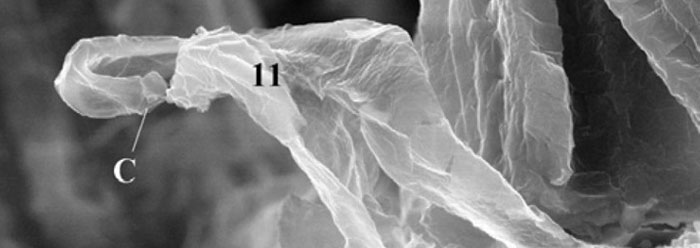Has alien life really been found on a meteorite?
A recent title in Nature News provides a succinct answer: "The aliens haven't landed."1 The article offered a sweeping refutation of NASA scientist Richard Hoover's claim that extraterrestrial microscopic bacteria fossils were found in a carbonaceous meteorite.
Nature News referred also to a statement by NASA chief scientist Paul Hertz, who provided a disclaimer on March 7, 2011, stating, "NASA cannot stand behind or support a scientific claim unless it has been peer-reviewed or thoroughly examined by other qualified experts."2
Hoover published his electron micrographs of the supposed bacteria in the Journal of Cosmology. Nature News affirmed that this particular journal is a "torch-bearer" for panspermia, the belief that life was "seeded" on earth by extraterrestrial organisms. But panspermia is fiction, not science. The possibility of extraterrestrial life may follow from the belief that living cells somehow evolved apart from Divine intent, but it does not follow from experiments or observations.
It appears that confirmation of panspermia was exactly what Hoover's paper attempted to provide. In it, he claimed that tiny mineral squiggle shapes, which he termed "complex filaments," were found inside a class of meteorites called CI chondrites. One of the meteorites, named Orgueil, landed in France in 1864.
If these squiggles were actual fossil bacteria, could they have simply been earth contaminants? Meteoriticist Harry McSween of the University of Tennessee in Knoxvillle told Nature News, "All of us who have studied meteorites, especially CI chondrites, are aware that they have been terrestrially contaminated."1
But the squiggles probably are not fossil bacteria. Hoover's paper described a wide array of strange, tiny shapes, one of which was a "hollow, flattened, twisted and folded sheath"3 that, like many others in the meteorite samples, looked nothing like known living things. Rather than odd shapes representing mineralized fossils of unknown alien bacteria, they could be—and perhaps must be—simply odd-shaped minerals inside the meteorite.
There was nothing in this, or any other meteorite studied so far, to show that life originated anywhere else but on earth.
References
- Ball, P. The aliens haven't landed. Nature News. Posted on nature.com March 8, 2011, accessed March 16, 2011.
- Scientists skeptical of alien life claim. Associated Press, March 8, 2011.
- Hoover, R. B. 2011. Fossils of Cyanobacteria in CI1 Carbonaceous Meteorites: Implications to Life on Comets, Europa, and Enceladus. Journal of Cosmology. 13: xxx.
Image credit: Copyright © 2011 Cosmology Science Publishers. Adapted for use in accordance with federal copyright (fair use doctrine) law. Usage by ICR does not imply endorsement of copyright holders.
* Mr. Thomas is Science Writer at the Institute for Creation Research.
